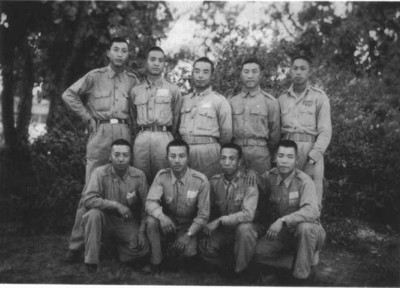军人政权统治后的缅甸
政治经济层面轮廓成形

IN the late1950s, two Americans with a keen interest in political dynamics inSoutheast Asia published a best-selling novel set in a fictitiouscountry called “Sarkhan” – “a small country out toward Burma andThailand”, as the monolingual political hack owed a favour by hisparty whom Washington sends out as its ambassador is told when heis offered the post. William Lederer and Eugene Burdick usedSarkhan as a generic mainland Southeast Asian country of the highCold War, a land with graceful people and an ancient culture, apredominantly rural society with a sophisticated elite over whosefate the West and the Soviet Bloc were locked in a brutal contest.Was the Sarkhan of The Ugly American really Laos, Thailand, Burma,Cambodia? It had traces of all four. It was meant, as noted, to begeneric.
Few observers have consideredMyanmar generic for a long time. By the time of the fall of Saigon,its xenophobic “Burmese path to socialism” had already led many toview it as a quaint Southeast Asian outlier. After the 1988-1990period – which brought terrible blood-shed on the streets ofYangon, the rise of Daw Aung San Suu Kyi, the abrogation of herparty’s election victory, the introduction of naked military rule,international pariah status and deep economic decline, and a long,long wait for a break that many thought would not come in theirlifetimes – Myanmar’s particularities appeared even more striking.Neither have the events of the past 18 months made it seem any lessgeneric, above all in the eyes of those who would now hail———— it as“the last economic frontier in Asia” and join what the editor of aleading Yangon weekly recently – and ironically – called thecurrent “Myanmar rush”.
Such views were always deeplysilly. Thankfully, the marked change in Yangon’s climate relativeto six and even three months ago has now made them demonstrablysilly. This change is encouraging. Facts on the ground are becomingclearer. The realities that will define Myanmar’s political economyin the medium-term future seem to be coming into focus. For foreignfirms and governments and international organisations that takeSoutheast Asia seriously, whose understanding of the regiontranscends the level that one associates with, say, the leadershipof American chambers of commerce in Southeast Asian capitals or thepampered, parochial globalists-in-their-own-minds who staff theInternational Monetary Fund (IMF) and the International Bank forReconstruction and Development (IBRD), this is goodnews.
As the irrational exuberance ofthe past year ebbs, Myanmar is not becoming Sarkhan. The high ColdWar in Southeast Asia is long over. But the country is beginning topresent what look like familiar, even generic, contours ofpost-Cold War Southeast Asian political economies. It is worthtracing some eight of these contours.
A griculturedominates employment in Myanmar, with 70 percent of the populationemployed in the sector. It accounts for just over 40pc of GDP. Itis the largest sector of the economy, but one whose productivitylags that of other sectors. Many Myanmar people on the land facedeep, deep poverty. Food is often an issue; nutrition is almostalways an issue. Linkages between the Myanmar farm sector and othersectors merit close attention. Few observers will believe thatagricultural surplus is destined to fuel industrial growth in thesecond decade of the 21st century, in Myanmar or elsewhere. Myanmarmust, to borrow an expression from the late Arthur T Mosher, getits agriculture moving – its smallholder agriculture. It is in thesmallholder sector where productivity gains must come and avirtuous cycle of economic security must slowly take shape.Otherwise, the lives of the majority of Myanmar’s people willremain difficult and its consumers’ purchasing power low. And therewill in all likelihood be political consequences, not least asmanifest in elections.
Myanmarfaces a natural resource curse. Inflows of money to buy Myanmar’sprimary products from the limited number of countries doingbusiness with the country had already driven the exchange rate upand distorted the national economy, even before the waiver andsuspension of sanctions began. With the country now open to manyother business partners, this effect may well be exacerbated. Thedevelopment of a foreign-owned plantation sector could worsen thiscurse. Any investor lusting after Myanmar’s natural resources is apotential agent for further worsening still. Myanmar may not escapeits resource curse and the ensuing risk of long-term economicdistortion any time soon.
As it marksall of Southeast Asia, urban primacy marks Myanmar. Yangon andMandalay dwarf other towns. The first is home to at least 7-9pc ofthe country’s population, but to far higher percentages of itsdoctors, good schools, newspapers, and more. Pronounced urban biasis already evident in Myanmar’s economic policy regime. Thecontinued overvaluation of the exchange rate hurts producers butbenefits urban consumers. While Myanmar needs capital goods, someobservers point to an extended luxury import boom. Observantbusinessmen from Asia visiting Myanmar for the first time have ahard time squaring the signs of prosperity that they see in Yangonwith the country’s amply documented poverty. All of this is typicalof the region, a region of primate cities. Urban primacy bringsbenefits: it concentrates economic activity and thus createscertain efficiencies. For the foreseeable future, seriousindustrialisation in Myanmar will be centred on Yangon. But urbanprimacy also brings disadvantages: the atrophy of and fiscalstarvation of sub-national government as well as urban congestion,slums, pollution, and eventual diseconomies of scale.
A complexdynamic among technocrats and soldiers and domestic businessinterests also numbers among the contours of Myanmar’s emergingpolitical economy. The country’s ascendant technocrats havearticulated a commitment to economic growth through the creation ofa competitive setting for foreign direct investment (FDI). Theyhave sold many of the former soldiers now in power on this model.They have sought to broaden the base of the country’s technocracyby creating a new National Economic and Social Affairs Council toserve the executive branch. This council joins parliament’sCommission on the Assessment of Legal Affairs and Special Issuesamong Myanmar’s brain-trusts. But these bodies serve as an arena –an arena that those familiar with, say, the Thai and Indonesianstories will recognise – for a continuing dance among technocrats,soldiers or ex-soldiers, and businessmen. One of the leadingforeign observers of the Myanmar economy remarked not long ago thatMyanmar’s leading businessmen are at one and the same time activelyin favour of change, willing passively to go along with it, andnervous about the competition that change will bring. And there isanother level to this dynamic. Some big business interests havebegun to criticise the technocrats’ commitment to FDI, notnecessarily out of concern for their own firms but rather withwarnings that smaller firms and the social bases of post-socialisturban Myanmar cannot survive what the technocrats plan. Thesecriticisms may well shape the rarely reported politics of economicchange in Myanmar – politics that will matter. What is certain isthat the remarkable absence of open economic xenophobiacharacteristic of much of 2011 and early 2012 has given way to amore realistic sense that Myanmar’s domestic business sector needsa seat at the table, that asserting one’s interests does not makeone a corrupt, rent-seeking “crony”. This new awareness has beenmanifest in what is perceived as the possible roll-back of someopportunities for foreign enterprise and in resultant termsgoverning foreign investment that may hold nothing unfamiliar inthe Southeast Asian context. Observers note that this dynamic willplay out differently in different sectors. It is not about “bootycapitalism”. The commitment to building a real economy remainsbroad, but the perceived “stalling” in the making of some decisionsreflects the dynamic among ex-soldiers, technocrats, and domesticbusiness interests, one as regionally familiar as it is likely tobe enduring.
Anotherfeature of the landscape is and will remain state-ownedenterprises, fully familiar to observers who know today’s Singaporeand Vietnam or the Thailand and Indonesia of the recent past well.Several weeks ago, at the Myanmar Forum in Singapore, presidentialadviser for economic affairs Winston U Set Aung said that leadingreformer, minister for industry, and chairman of the MyanmarInvestment Commission U Soe Thein was committed to a Myanmarwithout state-owned enterprises. But he spoke in the same breadthof measures such as “corporatisation” and “equitisation” that havehad such chequered histories in contexts such as Singapore andVietnam. Will Myanmar’s private-sector firms grow so rapidly as torender irrelevant even unreformed state enterprises, as inThailand? Will they reduce the current role of the military-ownedMyanmar Economic Corporation and Myanmar Economic Holdings tonothing? Will these latter corporations be dismembered? Will theyprosper, as through joint ventures? None of this is clear. But noneof it will happen overnight. That much is clear. State-ownedenterprises will remain a feature of Myanmar’s political economyfor the foreseeable future.
Also infootsteps its neighbours, Myanmar is beginning to grope towardindustrial and investment policies. Viewers may not see Myanmarversions of the “Remarkable Indonesia” commercial of the BadanKoordinasi Penanaman Modal Republik Indonesia on BBC Worldtelevision any time soon. But the effect is the same. Myanmar willpromulgate a revised special economic zone law and a foreigninvestment law. But will these laws help more than on the margins?Reference to other large Southeast Asian economies may beinstructive here.
Much thesame is true of the role of the international financialinstitutions. One may well see crucial interventions in specificpolicy areas, as has occasionally been the case elsewhere inSoutheast Asia. But the IBRD, IMF, and Asian Development Bank arenot going to wave magic wands and create a modern Myanmar economy.Rather, they will become more and more taken-for-granted parts ofthe scenery. How many in today’s Saigon hang on the words of theseoutfits’ expatriate economists sitting in Hanoi? Would Thailandnotice if the IBRD mission in the Siam Discovery tower werevaporised tonight?
Finally,many in this post-Asian Financial Crisis world may find it curiousor outright unbelievable, but Myanmar will have a domestic – anddomestically controlled – banking sector. Bank credit today amountsto only 5pc of GDP. Yet there are some 20 non-government commercialbanks. Yes, there will be banking and foreign exchange laws. Yes,the Central Bank of Myanmar will up its game, not least throughcooperation with foreign institutions. More branches of fewer bankswill, ideally, help finance growth in the countryside and thenmobilise resultant savings. But knowledgeable observers do notconsider large domestic firms under-capitalised. These firms arehardly waiting for foreign banks to enter Myanmar and ride to theirrescue. Trade finance defines the activities of much of Myanmar’sfinancial sector, broadly understood, just as it long did inThailand. Foreign involvement, on some terms, will become part ofthe financial landscape. But the hedge-fund gang needs to take acold shower and, upon emerging, look “financial sovereignty” up onthe web.
Along withthese eight rather generic features of post-Cold War Southeast Asiathat characterise Myanmar’s emerging political economy, the countrydoes show a few distinctive wrinkles. One is the significant roleof parliament vis-à-vis the executive branch in deliberations overeconomic policy. A second is the possibility that a competitiveelection in 2015 will change the cast of characters making economicpolicy before this emerging political economy is fullyconsolidated. A third is the relatively poor preparation andthinness of the technocracy, a weakness due not least to a failureon the part of Japan, the US, Australia, and Europe to offer youngMyanmar the right sort of educational and training opportunities inrecent decades. Myanmar thus presents a real contrast to post-1958Thailand, to Indonesia in the early New Order, and even perhaps toVietnam as the results of “i mi” began to attain critical mass.Fourth, of course, is Myanmar’s relationship with its largestneighbour. To amend the long-time Mexican president Porfirio Díaz’sprobably apocryphal lament, the country is so far from God and soclose, so very close, to the People’s Republic of China!
What are the implications of thisquick tracing of the contours of Myanmar’s emerging politicaleconomy? The most surprising implication is how familiar it alllooks. But, please note, this familiarity is not due to Myanmarbeing destined to follow the path that its neighbours in SoutheastAsia have already followed. This is not the story of a laggard. Itis not even the description of a path. Rather, it is thecharacterisation of a not so unfamiliar political-economicenvironment, one likely in most of its features to endure, and oneto which those who would understand and maybe even take a hand inMyanmar’s future ought to accustom themselves.
 爱华网
爱华网



